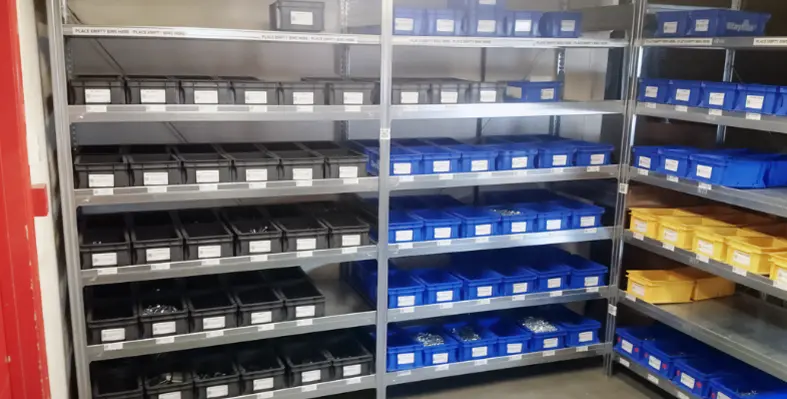UK-based company Staytite Limited, which provides a wide range of quality industrial fasteners for manufacturing businesses across industries, is highlighting its latest solutions using a Kanban method. Since "visual card" is how the Japanese word "kanban" is translated, the kanban system essentially refers to using visual signals to suggest actions that are necessary to maintain a process flow.
Adopting a Kanban approach to part replenishment as part of your manufacturing process ensures the levels of stock manage themselves, driven by the output of your production line. This strategic adaptation not only transforms inventory management but also promises significant operational enhancements.
A company's production needs are unique, tailored to its specific operations. For instance, a rail shed servicing trains has different requirements to that of an electronics firm producing set-top boxes or an automotive manufacturer. Despite differences, they all need fasteners and category 'C' parts to maintain their output. Yet, ensuring a consistent supply poses challenges, with associated logistics and storage costs to consider.
New technology
“Adopting a Kanban – put simply, a delivery method for the parts needed on the shop floor – ensures delivery of parts occurs effectively,” says Staytite. “Typically, this would involve bins or containers on a shelf, at, or close to the point of use. There's nothing special about that, but what if the levels of stock maintained themselves, without any need for manual ordering?”
Example: Two bins or containers are used to store a particular item with one bin designated as the active bin containing the inventory currently being used, while the other bin is the reserve bin, holding a predetermined quantity of backup inventory (usually placed behind the active bin). When the active bin is empty, it is either placed upon the top of the rack, or swapped with the reserve bin. The reserve bin is then put into use.
Staytite's envoys visit production areas according to agreed schedules, identifying requirements by noting empty bins, ordering new parts, and refilling the reserve bins accordingly, ready to replace the active bin when depleted again.
“Once a Kanban has been installed, this is exactly what you would expect, with the normal operation of part replenishment converted to an automatic process, alleviating the need for the customer to check stock levels, order or take delivery of parts. The entire operation is usage-driven by the shop floor. Once consumed, you would only receive the parts you need, replenished to a predetermined quantity. This eliminates waste and can save space, time and money, along with a host of other ‘hidden’ administration costs.”
For more information about two-bin systems, cloud-connected smart racking, and vending machines, contact Staytite, +44 (0) 1494 462322, email
Learn more about Staytite’s inventory







